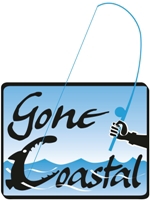FWC September “Gone Coastal” column: Love for saltwater wade-fishing helped retiring FWC staffer do job
Florida Fish & Wildlife Conservation Commission sent this bulletin at 09/24/2014 02:03 PM EDT
(Having trouble viewing this email? View it as a Web page.)

September 24, 2014
September “Gone Coastal” column
By Amanda Nalley
Photos available on FWC’s Flickr page: https://flic.kr/s/aHsk49oCyv.
Suggested Tweet: FWC longtimer shares years of saltwater #fishing tips! Learn more @MyFWC Gone Coastal: https://content.govdelivery.com/accounts/FLFFWCC/bulletins/d153c2 #Florida
Love for saltwater wade-fishing helped retiring FWC staffer do job
Before I became a Florida Fish and Wildlife Conservation Commission (FWC) spokesperson, I was a reporter, and FWC public information coordinator Stan Kirkland was my lifeline to anything outdoors.
Ever helpful and straightforward, Kirkland exemplifies what it means to be an FWC public information specialist. Like many of us in similar positions, he has a passion for outdoor recreation, which includes 25 years of first-hand saltwater fishing experience, something he credits for helping him do his job better.
Kirkland retires this winter after serving the state for just over 40 years, 38 of which were with the FWC and an FWC predecessor, the Game and Fresh Water Fish Commission.
Kirkland grew up freshwater fishing on Lake Seminole and the Apalachicola River in Jackson County. His saltwater experience was limited until 1978, when he moved to Panama City and met David Barnes, who would introduce him to the world of inshore wade-fishing.
“He showed me where to go, how to fish and the secrets,” Kirkland said. “There are some things you need to pay attention to and that’s what David taught me.”
While wade-fishing has plenty of benefits (no-cost shoreline fishing license, anyone can do it, low cost), not needing a boat was a big sell for Kirkland.
“I can’t tell you how many offshore trips I’ve said ‘thanks but no thanks’ to,” said Kirkland, who would love to go deep-sea fishing but struggles with intense seasickness.
Today, Kirkland wade-fishes nearly every weekend except during turkey hunting season. “I don’t catch every time I go but, all things considered, I do OK,” he said. On his most recent trip, he caught two spotted seatrout, five flounder, a Spanish mackerel, and three undersized red drum.
“I look like a gypsy out there,” he said about the gear that he lugs with him, which includes an 8-foot cast net for bait, a live-bait bucket, a fishing vest, a belt made for wade fishing, a small dip net and a 7-foot medium action spinner reel with 12-pound test and a 12-inch fluorocarbon leader tied to a small jig with “just enough weight to hold bait and get to the bottom but still wiggle and move.”
We asked Kirkland to share some of his top wade-fishing tips before he leaves the agency, and here is what he had to share:
- Watch your tides. Never fish a low tide. High tides can be tricky as well. If the water isn’t moving, the bait is not moving.
- Get a pair of wading shoes or diving boots and wear them religiously. There are a lot of sting rays out there.
- Make sure you have a long stringer and let them float away from you. In 25 years, Kirkland only had one problem with a shark coming for his fish, but he says he sure was glad those fish weren’t right next to him.
- Think like a fly fisherman and “match for the hatch” by using bait on which fish are feeding. Kirkland prefers finger mullet, alewives and bull minnows.
- Don’t overfill your bait bucket. You only need 10 to 20 specimens at a time. More than that can kill the bait.
- Protect yourself from the sun. Kirkland wears long sleeves, a hat, a Buff and good polarizing sunglasses and says all are a must. Of course, make sure you have something to cover the buttons on your shirt if you plan to use a cast net for bait.
Share YOUR fishing photos and stories with us with an email to Saltwater@MyFWC.com. Learn more about our photo requirements by visiting MyFWC.com/Fishing and clicking on “Saltwater” and “Ethical Angler Photo Recognition Program” at the bottom of the page. Don’t forget to record all of your catches on the iAngler phone app or at snookfoundation.org.
Gone Coastal is one of many ways that the Florida Fish and Wildlife Conservation Commission (FWC) Division of Marine Fisheries Management is helping recreational anglers understand complex saltwater regulations and learn more about saltwater fishing opportunities and issues in Florida. We are also available to answer questions by phone or email anytime, and we would love the opportunity to share information through in-person presentations with recreational or commercial fishing organizations. To contact the FWC’s Regulatory Outreach subsection, call 850-487-0554 or email Saltwater@MyFWC.com.

